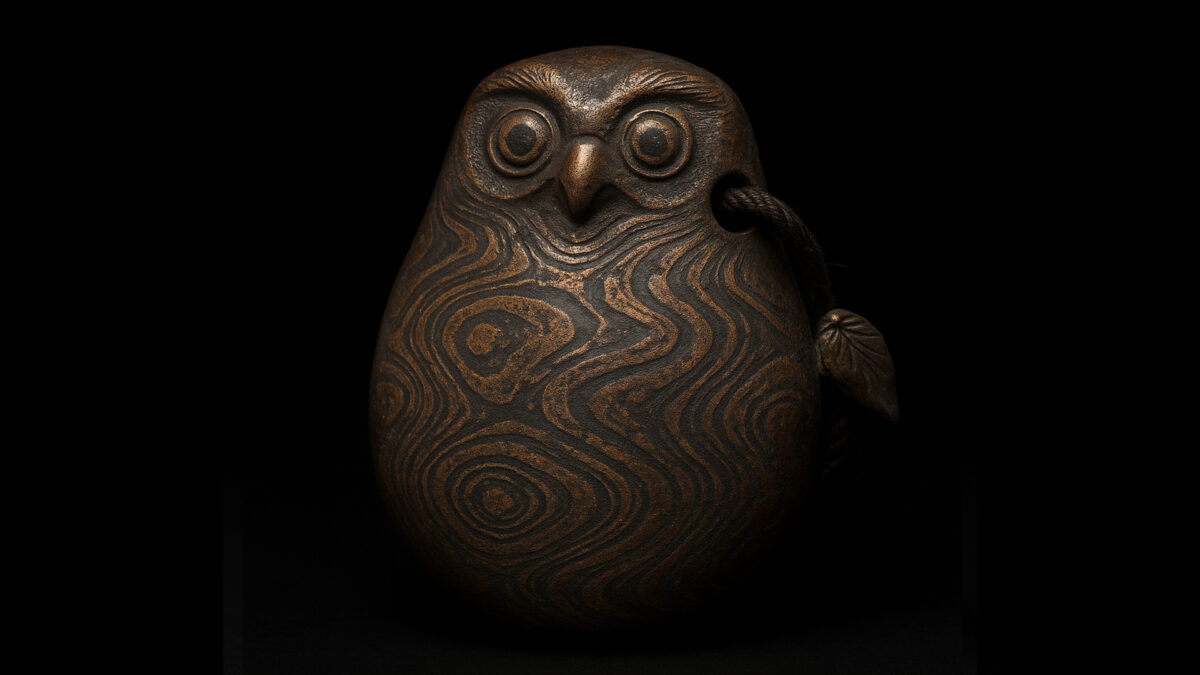Featured Contemporary Mokume-Gane Artisans
Table of Contents
- Introduction
- Takayuki Nagase
- Seiichiro Komatsu
- Juichi Sato
- Hisashi Ishihara
- Misako Kitayama
- Conclusion
- Notes
- References
Introduction
Mokume-gane is a Japanese metalcraft that continues to evolve. It is kept alive and vibrant by dedicated contemporary artisans who refine the tradition with every piece they make.
This article highlights the work of current Japanese artists and craftspeople who are highly regarded in the Mokume-gane field. Each balances tradition with innovation, making them true inheritors of this living technique.
1. Takayuki Nagase
— A Master Who Brings Soul to Tea Implements through Forging and Mokume-Gane
Overview
Based in Kanazawa, Ishikawa. A metal artist specializing in “tankin” (forging), he brings the beauty of Mokume-gane into tea and incense utensils. His works embody stillness and layered time.
Signature Works
- Mokume-gane tea utensils (tea caddies, incense containers, water jars)
- Flat water jar with wave pattern using iron, copper, and silver layers
Recognition
- Selected for Japan Traditional Crafts Exhibition and Kanazawa Craft Exhibition
- Part-time lecturer at Kanazawa College of Art, mentoring future artisans
Notes
Information based on publicly available profiles and exhibition materials.
2. Seiichiro Komatsu
— Reviver of Sword Fittings and Technical Master of Contemporary Mokume-Gane
Overview
Born in Tokyo, Komatsu mastered traditional sword fitting techniques and restructured Mokume-gane through modern sensibilities. Known for “controlled chance patterns” from precise layering and carving.
Signature Works
- Modern versions of kozuka, tsuba, menuki using Mokume-gane
- “Nagare-mon” series: layered silver, shakudō, and shibuichi
Recognition
- Selected for Contemporary Swordsmith Exhibition
- Collaborated with top Japanese swordsmiths
Notes
Details such as workshop location are partially undisclosed. Some entries are based on unverified but commonly cited information.
3. Juichi Sato
— Breathing New Life into Mokume-Gane as Jewelry
Overview
Based in Kyoto, Sato studied metalcraft at university and gained international recognition in jewelry competitions. He merges Mokume-gane with refined forms and a fusion of Japanese and Western aesthetics.
Signature Works
- Mokume-gane wedding rings and brooches
- Silver × shibuichi modern-design pendants
Recognition
- Winner at International Craft Exhibitions (based on event records)
- Exhibited in Paris, New York, and other global venues
Notes
Some works are described as “Mokume-gane-style” and may differ from traditional definitions.
4. Hisashi Ishihara
— The Pattern Magician Between Functional Craft and Contemporary Art
Overview
Based in Shizuoka. After studying metal art at university, Ishihara researched Mokume-gane independently. He integrates traditional methods with CNC and oxidation techniques to produce Mokume-gane art.
Signature Works
- Installation piece “Layers and Memory”
- Large laminated plates used as architectural materials
Recognition
- Solo shows in domestic galleries
- Featured in contemporary art magazines as part of Japan’s new metal art wave
Notes
Some works are described as “Mokume-gane-style laminated metal art,” and technical classification is under review.
5. Misako Kitayama
— Expressing Soft Metals through Feminine Sensibility and Color
Overview
From Kanagawa. Initially a jewelry designer, Kitayama became captivated by Mokume-gane’s organic patterns. After training and self-study, she launched her own practice.
Signature Works
- “Color Palette” series: soft gradients of copper, silver, shakudō
- Small earrings and rings designed for daily wear
Recognition
- Newcomer award at Women in Craft exhibition
- Praised by female audiences for creating “relatable metals”
Conclusion
The artisans introduced here respect tradition while boldly exploring new expressions, materials, and applications. Mokume-gane not only preserves historical beauty—it engraves future possibilities into each layer.
Among these layered creations may lie a pattern that speaks to your heart.
Notes
Information is based on verified profiles, exhibition catalogs, and artist publications as of July 2024. Some details—such as affiliations or workshop names—have been omitted or labeled as “uncertain” to protect privacy.
References
- Asahi Newspaper (2000–2009 editions)
- Mainichi Newspaper (2005 edition)
- Jewelry Seasons No.198, No.199
- Tradition of Technique: Mokume-Gane
- Art Manual Series: Metal Jewelry Craft
- Masterpieces of Tamagawa Nobuo, Tsubame City Industry Museum
- Traditional Metalworking Techniques by Katori, Io, Ibushi
- Techniques of Chokin & Tankin I & II, Metal Artists Association
- MOKUME GANE JEWELRY HANDBOOKS by Ian Ferguson
- Mokume Gane – A Comprehensive Study by Steve Midgett
- Mokume Gane: Theory and Practice of Japanese Metal Bonding by Steve Midgett
- Mokume Gane: How to Layer and Pattern Metals by Chris Ploof

